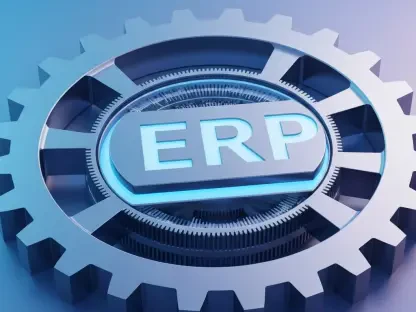I’m thrilled to sit down with Anand Naidu, our resident Development expert, whose profound knowledge in both frontend and backend development, coupled with his mastery of various coding languages, makes him a true guru in the realm of microservices and observability. Today, we’re diving into the complexities of monitoring microservices, exploring best practices for building robust systems through standardized observability, unified tools, and continuous tracking. Join us as Anand shares his insights on turning raw data into actionable solutions for healthier, more resilient architectures.
How does monitoring microservices differ from traditional monolithic applications, and what makes it so challenging?
Monitoring microservices is a whole different beast compared to monolithic apps. In a monolith, you’ve got one big application, so logs and metrics are centralized, and tracing issues is often straightforward. With microservices, you’re dealing with a distributed system where each service operates independently, communicating over networks. This means a single user request might bounce through multiple services, and if something goes wrong, pinpointing the issue becomes like finding a needle in a haystack. The sheer volume of data, the diversity of tech stacks, and the dynamic nature of these environments add layers of complexity that just don’t exist in a monolith.
What are some of the biggest hurdles you’ve encountered while keeping tabs on a distributed system like microservices?
One of the biggest hurdles is the fragmentation of data. Each service might generate logs in different formats or use different tools, making correlation a nightmare. Another challenge is latency—when a request slows down, figuring out which service or network hop is the bottleneck can be incredibly tricky without proper tracing. Also, dependency issues often crop up; if one service fails, it can cascade through the system, and without a clear map of how services interact, you’re often playing catch-up. These challenges really test your patience and demand a solid strategy.
Can you share your thoughts on how effective monitoring influences the overall health and performance of a microservices architecture?
Effective monitoring is the backbone of a healthy microservices architecture. It’s not just about catching problems after they happen; it’s about proactively spotting trends that could lead to issues. Good monitoring gives you visibility into performance, uptime, and error rates, which directly impacts user experience. It also helps in capacity planning—knowing when to scale a service up or down based on real data. Ultimately, it builds resilience by reducing downtime and ensuring that when incidents do occur, you can resolve them quickly before they affect customers.
What does standardized observability mean to you when it comes to managing microservices?
Standardized observability is about creating a common language for all your services to communicate their state. It means having consistent formats for logs, traces, and metrics across the board so that when you’re troubleshooting, you’re not wrestling with mismatched data. To me, it’s the foundation of understanding a complex system—without it, you’re just guessing. It’s about ensuring that every piece of telemetry data, no matter where it comes from, can be correlated and analyzed in a unified way to give you a clear picture of what’s happening.
Why do you believe having a consistent logging format across services is so critical?
A consistent logging format is critical because it streamlines debugging and analysis. When logs from different services follow the same structure—say, JSON with predefined fields—you can easily parse and search them using automated tools. This cuts down the time spent deciphering what each log means. It also helps in correlating events across services, especially when you’re dealing with a request that spans multiple components. Without consistency, you end up with chaos, and troubleshooting becomes a manual, error-prone slog.
Could you walk us through your approach to setting up logging with a structured format like JSON in a microservices environment?
Sure, the first step is defining a schema for your logs that every service will follow. With JSON, you’d include mandatory fields like timestamp, service name, log level, request ID, and a message field for details. Then, I’d integrate a logging library or framework that supports JSON output natively—something like Logback for Java or Winston for Node.js. Next, I ensure that each service logs relevant context, especially unique identifiers for requests, so you can trace them end-to-end. Finally, I’d pipe these logs into a centralized system for storage and analysis, making sure they’re indexed properly for quick searches. Testing the setup with a few services first helps iron out any kinks before rolling it out fully.
How does distributed tracing enhance your ability to understand request flows across multiple services?
Distributed tracing is a game-changer because it gives you a detailed map of a request’s journey through your system. It shows you every hop—where the request started, which services it touched, and how long each step took. This visibility lets you spot bottlenecks, like a slow database call in one service, or failures that might not be obvious from logs alone. It’s like having x-ray vision for your architecture; without it, you’re often blind to how services interact and where things break down.
What tools or frameworks have you leveraged for distributed tracing, and how have they worked for you?
I’ve worked extensively with OpenTelemetry, which I find incredibly powerful because it’s vendor-neutral and supports a wide range of languages and platforms. It allows you to instrument your services and collect traces that can be sent to various backends for visualization. My experience has been positive—setting it up takes some effort, especially with custom instrumentation, but once it’s running, the insights are invaluable. Pairing it with visualization tools to see the traces graphically has helped me quickly identify latency issues and dependency problems in real-time.
Why is it beneficial to define a standard set of metrics for all services in a microservices setup?
Defining a standard set of metrics ensures you’re measuring the same aspects of performance and health across all services, which is key for consistency. It lets you compare apples to apples—whether it’s request counts, error rates, or latency—and build dashboards that give a holistic view of your system. Without standards, you might miss critical issues because one service measures something differently or not at all. It also simplifies alerting and trend analysis, making it easier to spot anomalies and act on them.
Can you give some examples of metrics you typically track to gauge the performance of microservices?
Absolutely, I always start with request count to understand the load on each service. Then there’s latency, measuring how long requests take at different percentiles—P50, P95, etc.—to catch outliers. Error rate is crucial; tracking the percentage of failed requests helps identify reliability issues. I also look at resource usage, like CPU and memory, to spot potential bottlenecks. Finally, throughput—how many requests a service can handle per second—gives a good sense of capacity and scalability needs. These metrics together paint a clear picture of performance.
What is a unified observability stack, and why do you see it as essential for microservices monitoring?
A unified observability stack is essentially a centralized system where all your telemetry data—logs, traces, and metrics—comes together for analysis and visualization. It’s like having a single control center for your entire microservices ecosystem. It’s essential because it eliminates the need to jump between different tools to piece together what’s happening. When everything is correlated and accessible in one place, you can diagnose issues faster, reducing the time to detect and resolve problems. It’s a lifesaver in a distributed setup where data is scattered by nature.
How have you seen a unified view of logs, traces, and metrics speed up issue resolution?
Having a unified view cuts down on the guesswork significantly. I’ve been in situations where an error in one service wasn’t obvious until I correlated it with a spike in latency from a trace and a specific error message in the logs—all visible on the same dashboard. Without that single pane of glass, I’d have spent hours switching between systems, trying to connect the dots. It’s not just about speed; it’s also about accuracy. You’re less likely to miss critical clues when everything is right in front of you, leading to quicker, more confident resolutions.
What key performance indicators do you prioritize when monitoring a microservices environment?
I prioritize KPIs that directly reflect user experience and system reliability. Service uptime and availability are non-negotiable—you need to know if a service is down before users notice. Latency is another big one, as it impacts perceived performance. Error rates are critical for catching issues early, especially if they start trending upward. I also keep an eye on request volume to understand load patterns. These indicators, when tracked continuously, give you a real-time pulse on the system’s health and help prevent small issues from becoming major outages.
How do you approach mapping dependencies between services, and why is this so valuable?
Mapping dependencies starts with documenting how services interact—which ones call others and for what purpose. I often use automated tools that discover and visualize these relationships based on trace data, creating a dependency graph. This is valuable because it helps you understand the blast radius of a failure—if one service goes down, you know exactly which others might be affected. It also aids in root cause analysis; seeing the chain of dependencies lets you trace back issues to their origin. Without this map, you’re often shooting in the dark during incidents.
Looking ahead, what’s your forecast for the future of observability in microservices architectures?
I think observability in microservices is headed toward even greater automation and intelligence. We’re already seeing tools that use machine learning to detect anomalies and predict issues before they happen, and I expect that to become mainstream. Integration will also deepen—unified stacks will evolve to not just correlate data but suggest remediation steps automatically. There’s also a push toward standardization with frameworks like OpenTelemetry becoming the norm, which will make observability more accessible across diverse systems. It’s an exciting space, and I believe it’ll empower teams to build even more resilient architectures with less manual overhead.









